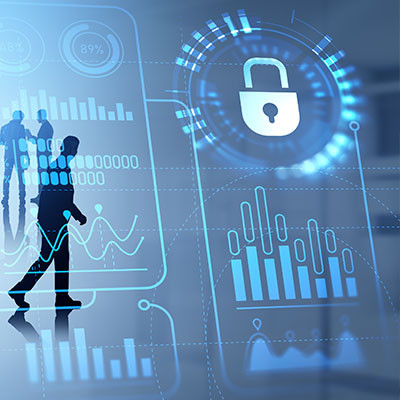It isn’t rare for people to subscribe to things and only stay subscribed because the cancellation process is so challenging and inconvenient. However, the Federal Trade Commission is looking to stop this, adopting a rule that eliminates the capability for businesses to put hurdles in front of cancellation processes.
“Toxic” is a buzzword that is often used nowadays, but when it is used to describe a business’ work environment, it needs to be treated with deadly seriousness.
If a workplace is a place people don’t like to be, many drawbacks will ultimately impact operations. Therefore, it is to your benefit to keep your business as positive a workplace as possible.
Let’s discuss how to tell if your company has a toxic workplace and, if so, how to resolve it.
Security awareness training is a critical process for modern businesses to undergo to have any chance of success. Unfortunately, as much as security software or policy can help, it can only do so much. You also need your team members to be on board, knowledgeable about what they need to do, and motivated to do it.
In light of this, let’s talk about security awareness training and what it needs to involve.
Businesses have to deal with a lot of different types of problems, but they often don’t see many of the issues that come from within their company. Whether this comes from hackers, disgruntled customers, or unreliable vendors, every business leader constantly deals with some type of issue. Unfortunately, sometimes these problems can come from inside your company. Today, we look at two employee issues that can potentially cause major headaches for business owners.
It can be challenging to deal with failure in any context, but in the case of your workplace projects and other efforts, it can be particularly harsh. This makes it all the more important to frame such failures as opportunities to grow in the future.
Let’s discuss six reasons an initiative may fail and the lessons that can be learned from these situations.
Unfortunately, cyberattacks will only continue in the weeks, months, and years to come, making it increasingly essential that businesses have access to cybersecurity expertise. Even more unfortunately, professionals with this level of expertise are becoming harder to find. Globally, we’re short almost four million people, and those we have are prone to make mistakes in their first few years. This comes from a report by Kaspersky, entitled “The Portrait of Modern Information Security Professional,” Let’s review what the cybersecurity developer found and what we can take away from these findings.
It isn’t easy to be a member of the workforce right now. While we won’t cover them in detail, plenty of stressors—related to and separate from the workplace—can easily impact an employee’s performance. As a result, it is often in your company’s best interest to invest in your team’s well-being, and one way to do this is by implementing and encouraging the use of different technologies.
This goes out to all the business owners, managers, department heads, and other leaders in the workplace who have to field user complaints and issues.
Being in this position can be hard, because you often have to say no. No, we can’t change the timeline or increase the budget for this project. No, we can’t do XYZ that way because it would break compliance. No, we can’t get new hardware/software in until we get it approved in the budget. Repeat ad nauseam.
Chances are, your and your employees’ lives are fully permeated with technology, from the very start of the day to the moment you close your eyes to sleep in the evening. That’s just how the world works nowadays, but there is evidence that this permeation of tech can have some adverse effects on us all. That’s why, as odd as it may sound coming from an IT provider, you may want to occasionally take a moment to step away from technology.
When you consider your business’ investments, you probably think about things like the hardware your team uses and the software this hardware supports. You might think about the furniture you’ve purchased to outfit your office. However, one often overlooked—but incredibly important—element that needs some level of investment is your employee satisfaction.
We’ve been examining the concept and phenomenon known as procrastination in recent weeks, touching on why we do it and how it often manifests itself in business processes. For our final few parts, we’ll be focusing on how you can stop procrastinating by utilizing both quicker, short-term tactics and long-term, sustained changes. Let’s start with some short-term tactics.
We recently started to pick apart the concept of procrastination as a means of understanding it better, and potentially, getting better at not doing it. Last time, we touched on a few ways that procrastination can potentially manifest, so it only made sense to us that we would continue pulling that thread and try to help you identify how you tend to procrastinate more specifically.
“Never put off until tomorrow what you can do today.” It’s timeless advice, as well as some of the easiest and most tempting advice to ignore. Procrastination is one of those things that we all assume we understand, but we wanted to take a bit of time to explore it in greater detail…and figure out how we can all work to resist it.
Who are you? While it’s a question that’s been asked in all contexts with all levels of metaphysicality attached—from asking someone their name to prompting someone to follow a path of spiritual self-discovery—the growth of the metaverse once again urges us to ask it in a more literal way. When accessing a conglomeration of various services and platforms, how many identities will each user need to juggle?
Have you ever gotten a message that just makes your heart sink in your chest? Like, your dread piques the moment you see it? Chances are pretty good that your team members feel that way whenever you send them a particular message, particularly during certain times. Let’s consider why this may be the case, and how you can better manage your communications to more effectively communicate with your team.
How many of your employees do you think hold a second job? This isn’t a particularly outlandish concept, but one thing that has come about as a result of the COVID-19 pandemic and its surge of remote work is that some employees hold two jobs at the same time, and not in the way that you might expect.
When it comes to your business’ cybersecurity, it can be too tempting to operate under the assumption that the few cybersecurity events you hear about on the news are all that happen. Unfortunately, this is far from actual fact. Let’s review some of the statistics that might change your impressions, especially if you hold the aforementioned assumption.





















